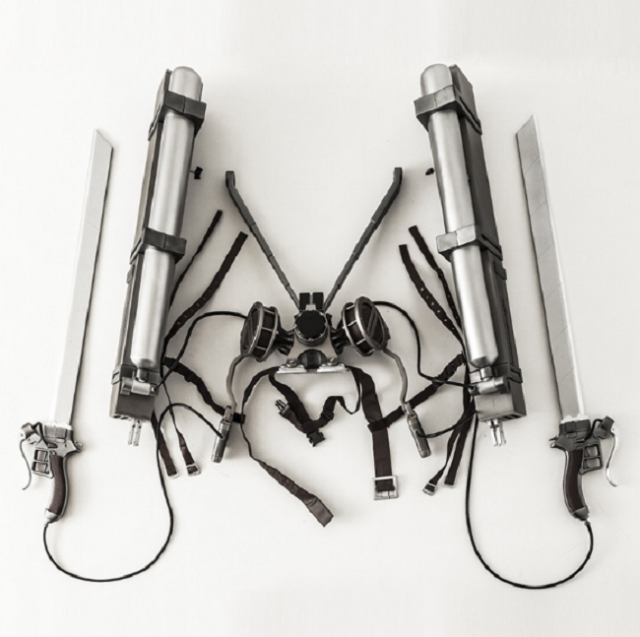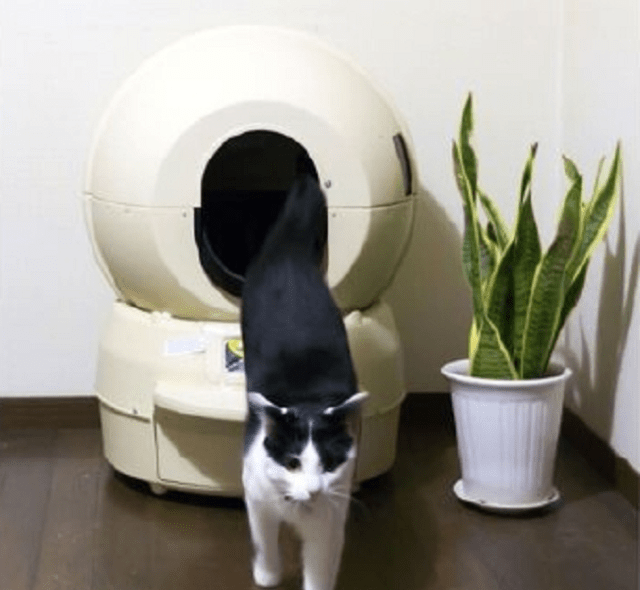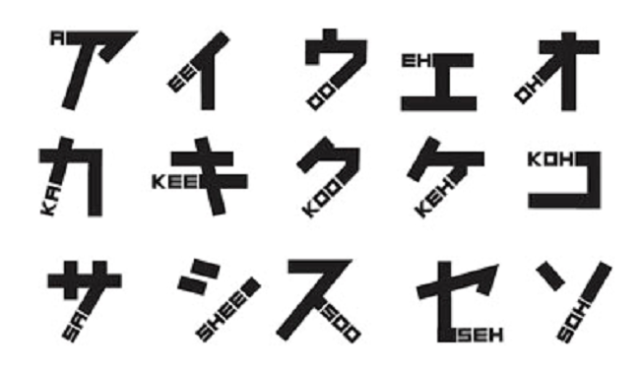Back when Japan was still at the mercy of the midsummer heat, a group of…creative anime fans tried to cool off with bowls of shaved ice. Ordinarily that wouldn’t be so weird, except that they set up their strawberry syrup dispenser to look like their treats were being flavored by an anime girl’s menstrual flow.
But hey, what’s the alternative to anime fans getting excited over 2-D characters having their periods? Anime fans getting excited about 2-D characters not having periods! Otaku around Japan have been sharing retouched pics of animation stars showing off pregnancy test results, and the trend isn’t limited to anime’s ladies.















 Return of Totoro sequel short anime announced for Ghibli Park
Return of Totoro sequel short anime announced for Ghibli Park Tokyo’s Tsukiji sushi neighborhood asks tour groups to stay away for the rest of the month
Tokyo’s Tsukiji sushi neighborhood asks tour groups to stay away for the rest of the month 7-Eleven now sells rice burgers in Japan, blurring the line between fast and convenience store food
7-Eleven now sells rice burgers in Japan, blurring the line between fast and convenience store food TikTok releases its Year in Music 2025 – Japan’s Top 10 Songs ranking
TikTok releases its Year in Music 2025 – Japan’s Top 10 Songs ranking Tokyo zoo imposes one-minute time limit for viewing pandas, line still four hours long
Tokyo zoo imposes one-minute time limit for viewing pandas, line still four hours long Japan’s last two pandas leaving for China next month, Ueno Zoo announces final day for twins
Japan’s last two pandas leaving for China next month, Ueno Zoo announces final day for twins Japan’s lap-pillow ear-cleaning salons aren’t just for pervy guys, we find out
Japan’s lap-pillow ear-cleaning salons aren’t just for pervy guys, we find out Tokyo event lets you travel back in time, for free, to celebrate 100 years since Showa era start
Tokyo event lets you travel back in time, for free, to celebrate 100 years since Showa era start Japanese communities giving their skylines a spring clean and saying goodbye to power lines
Japanese communities giving their skylines a spring clean and saying goodbye to power lines Do bears strike first with their left paw when attacking people? Japan wants to know
Do bears strike first with their left paw when attacking people? Japan wants to know Tokyo considering law requiring more trash cans following litter increase in heavily touristed area
Tokyo considering law requiring more trash cans following litter increase in heavily touristed area Sanrio theme park in Japan announces plans to expand into a Sanrio resort
Sanrio theme park in Japan announces plans to expand into a Sanrio resort This hot springs town in Japan sets fire across a mountain every winter in a beautiful tradition
This hot springs town in Japan sets fire across a mountain every winter in a beautiful tradition Gundam and Reebok team up for new GQuuuuuuX Pumps【Photos】
Gundam and Reebok team up for new GQuuuuuuX Pumps【Photos】 More Shinkansen trains being added to Japan’s “golden route” to meet traveler demand
More Shinkansen trains being added to Japan’s “golden route” to meet traveler demand Japanese man who didn’t know how banks work defrauded out of 21 million yen
Japanese man who didn’t know how banks work defrauded out of 21 million yen Japanese woman sues man for 1.5 million yen for violating her “right to chastity”
Japanese woman sues man for 1.5 million yen for violating her “right to chastity” U.S.A. now the fastest-growing market for Japan’s high-tech toilets, now selling quicker than ever
U.S.A. now the fastest-growing market for Japan’s high-tech toilets, now selling quicker than ever Kyoto samurai house wants to share its history of seppuku, torture and gold coins with visitors
Kyoto samurai house wants to share its history of seppuku, torture and gold coins with visitors Japan’s human washing machines will go on sale to general public, demos to be held in Tokyo
Japan’s human washing machines will go on sale to general public, demos to be held in Tokyo Starbucks Japan unveils new Christmas goods and a rhinestone tumbler that costs 19,500 yen
Starbucks Japan unveils new Christmas goods and a rhinestone tumbler that costs 19,500 yen Real-world Nausicaa Ghibli anime glider completes its final flight in Japan【Video】
Real-world Nausicaa Ghibli anime glider completes its final flight in Japan【Video】 Japanese train company is letting fans buy its actual ticket gates for their homes
Japanese train company is letting fans buy its actual ticket gates for their homes Is China’s don’t-go-to-Japan warning affecting tourist crowds in Tokyo’s Asakusa neighborhood?
Is China’s don’t-go-to-Japan warning affecting tourist crowds in Tokyo’s Asakusa neighborhood? The 10 best day trips from downtown Tokyo【Survey】
The 10 best day trips from downtown Tokyo【Survey】 Nintendo’s Kirby now delivering orders at Kura Sushi restaurants, but not in Japan
Nintendo’s Kirby now delivering orders at Kura Sushi restaurants, but not in Japan A guide to visiting Sagamiko Illumination, one of the three biggest light-ups in Kanto
A guide to visiting Sagamiko Illumination, one of the three biggest light-ups in Kanto Survey asks foreign tourists what bothered them in Japan, more than half gave same answer
Survey asks foreign tourists what bothered them in Japan, more than half gave same answer Japan’s deadliest food claims more victims, but why do people keep eating it for New Year’s?
Japan’s deadliest food claims more victims, but why do people keep eating it for New Year’s? We deeply regret going into this tunnel on our walk in the mountains of Japan
We deeply regret going into this tunnel on our walk in the mountains of Japan Studio Ghibli releases Kodama forest spirits from Princess Mononoke to light up your home
Studio Ghibli releases Kodama forest spirits from Princess Mononoke to light up your home Major Japanese hotel chain says reservations via overseas booking sites may not be valid
Major Japanese hotel chain says reservations via overseas booking sites may not be valid Put sesame oil in your coffee? Japanese maker says it’s the best way to start your day【Taste test】
Put sesame oil in your coffee? Japanese maker says it’s the best way to start your day【Taste test】 The top 10 annoying foreign tourist behaviors on trains, as chosen by Japanese people【Survey】
The top 10 annoying foreign tourist behaviors on trains, as chosen by Japanese people【Survey】 No more using real katana for tourism activities, Japan’s National Police Agency says
No more using real katana for tourism activities, Japan’s National Police Agency says Starbucks Japan reveals new sakura drinkware collection, inspired by evening cherry blossoms
Starbucks Japan reveals new sakura drinkware collection, inspired by evening cherry blossoms Japan’s last two pandas leaving for China next month, Ueno Zoo announces final day for twins
Japan’s last two pandas leaving for China next month, Ueno Zoo announces final day for twins Japan’s lap-pillow ear-cleaning salons aren’t just for pervy guys, we find out
Japan’s lap-pillow ear-cleaning salons aren’t just for pervy guys, we find out Tokyo event lets you travel back in time, for free, to celebrate 100 years since Showa era start
Tokyo event lets you travel back in time, for free, to celebrate 100 years since Showa era start Japanese communities giving their skylines a spring clean and saying goodbye to power lines
Japanese communities giving their skylines a spring clean and saying goodbye to power lines Do bears strike first with their left paw when attacking people? Japan wants to know
Do bears strike first with their left paw when attacking people? Japan wants to know Chikan molester runs away from Japanese schoolgirls at train station in Japan【Video】
Chikan molester runs away from Japanese schoolgirls at train station in Japan【Video】 Japan’s permanent Pokémon theme park zone announces grand opening date, ticket sale start
Japan’s permanent Pokémon theme park zone announces grand opening date, ticket sale start Japanese restaurant combines solo shabu shabu dining with the fun of a sushi train
Japanese restaurant combines solo shabu shabu dining with the fun of a sushi train Takoyaki store in Osaka becomes a hot topic on Reddit, but is it any good?
Takoyaki store in Osaka becomes a hot topic on Reddit, but is it any good? Japanese mom says she kicked wild bear while holding baby in her arms after sudden scary encounter
Japanese mom says she kicked wild bear while holding baby in her arms after sudden scary encounter Japanese woman mistaken for bear
Japanese woman mistaken for bear Site of the worst bear attack in Japanese history is a chilling place to visit
Site of the worst bear attack in Japanese history is a chilling place to visit Which Japanese conveyor belt sushi chain has the best salmon sushi?【Taste test】
Which Japanese conveyor belt sushi chain has the best salmon sushi?【Taste test】 Final Fantasy and Shinkansen announce collaboration with in-train audio play, SD art and merch
Final Fantasy and Shinkansen announce collaboration with in-train audio play, SD art and merch